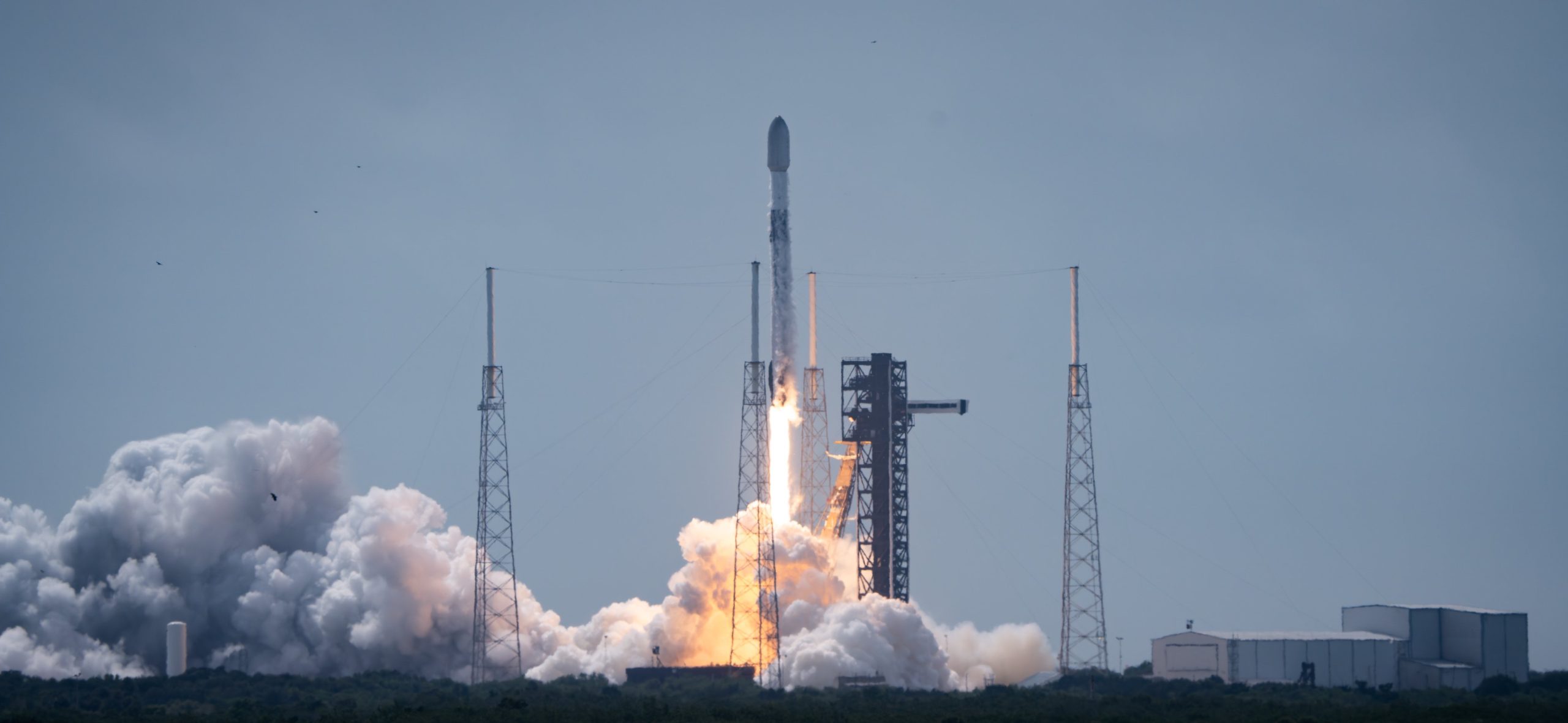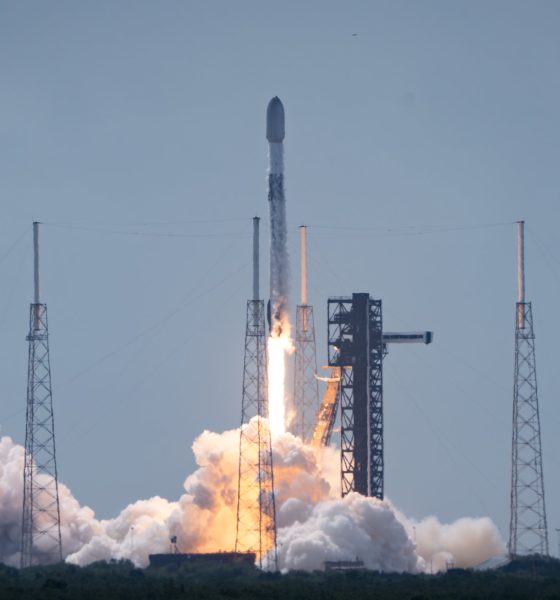SpaceX called out Federal Aviation Administration (FAA) administrator Mike Whitaker for making “several incorrect” and “deeply concerning” statements in front of Congress yesterday relating to licensing challenges the aerospace company has had with the agency.
SpaceX and the FAA have had a strange relationship, which has been highlighted as of late. Several communications from SpaceX have detailed opinions regarding a lack of urgency for licensing its upcoming Starship missions and fines that were handed out to the company last week.
The fines were related to alleged violations that occurred during launches in 2023.
SpaceX hits back at FAA in scathing new letter, claiming fines were retaliation
FAA administrator Whitaker appeared in front of Congress yesterday, specifically the aviation subcommittee of the House Transportation Committee, to be asked about several of the issues at hand.
Rep. Kevin Kiley, a Republican from California, asked Whitaker about the over $633,000 in fines related to two Summer 2023 launches.
Whitaker responded:
“I think safety is in the public interest and that’s our primary focus. It’s the only tool we have to get compliance on safety matters.”
Whitaker went on to claim that SpaceX launched without a permit from the FAA, a claim the company fiercely rebutted yesterday:
“That is false–SpaceX was fully licensed to launch the Falcon missions for which the FAA has, incorrectly, alleged non-compliances. FAA has not alleged SpaceX was not ‘permitted’ or not ‘licensed’ to launch these missions. SpaceX receives FAA licensing for all missions subject to the Commercial Space Launch Act.”
On a separate note, Starship has been ready to launch since August, but the FAA told the company that the earliest estimated approval would be sometime in November.
This would be Starship’s fifth test flight, but SpaceX has already started preparing the sixth flight in hopes that it can quickly launch the two, perhaps in a short time frame.
It doesn’t seem far-fetched, especially considering the delays to the fifth test flight.
Whitaker said regarding the Starship delay:
“[It] had to do with SpaceX filing an application and not disclosing they were in violation of Texas and federal law on some matters, and that’s a requirement to get a permit.”
He also defended the two-month delay:
“I think the two-month delay is necessary to comply with the launch requirements and I think that’s an important part of the safety culture.”
Whitaker also said there were delays in the sonic boom analysis after returning the Super Heavy booster. He claims SpaceX “failed to provide an updated sonic boom analysis.” SpaceX replied:
“SpaceX recently provided FAA data showing a slightly larger sonic boom area. Despite the slightly larger area, there is no new environmental impact. Nevertheless, FAA entered a new environmental consultation with Fish and Wildlife Service (FWS), which could result in a two-month delay. This is a paperwork exercise that could be swiftly addressed between agencies as a minor paperwork update.”
The full letter is available below:
FAA Administrator Whitaker made several incorrect statements today regarding SpaceX. In fact, every statement he made was incorrect.
It is deeply concerning that the Administrator does not appear to have accurate information immediately available to him with respect to SpaceX… pic.twitter.com/OrtMUvnCNI
— SpaceX (@SpaceX) September 24, 2024
I’d love to hear from you! If you have any comments, concerns, or questions, please email me at joey@teslarati.com. You can also reach me on Twitter @KlenderJoey, or if you have news tips, you can email us at tips@teslarati.com.

Elon Musk
SpaceX issues statement on Starship V3 Booster 18 anomaly
The incident unfolded during gas-system pressure testing at the company’s Massey facility in Starbase, Texas.

SpaceX has issued an initial statement about Starship Booster 18’s anomaly early Friday. The incident unfolded during gas-system pressure testing at the company’s Massey facility in Starbase, Texas.
SpaceX’s initial comment
As per SpaceX in a post on its official account on social media platform X, Booster 18 was undergoing gas system pressure tests when the anomaly happened. Despite the nature of the incident, the company emphasized that no propellant was loaded, no engines were installed, and personnel were kept at a safe distance from the booster, resulting in zero injuries.
“Booster 18 suffered an anomaly during gas system pressure testing that we were conducting in advance of structural proof testing. No propellant was on the vehicle, and engines were not yet installed. The teams need time to investigate before we are confident of the cause. No one was injured as we maintain a safe distance for personnel during this type of testing. The site remains clear and we are working plans to safely reenter the site,” SpaceX wrote in its post on X.
Incident and aftermath
Livestream footage from LabPadre showed Booster 18’s lower half crumpling around the liquid oxygen tank area at approximately 4:04 a.m. CT. Subsequent images posted by on-site observers revealed extensive deformation across the booster’s lower structure. Needless to say, spaceflight observers have noted that Booster 18 would likely be a complete loss due to its anomaly.
Booster 18 had rolled out only a day earlier and was one of the first vehicles in the Starship V3 program. The V3 series incorporates structural reinforcements and reliability upgrades intended to prepare Starship for rapid-reuse testing and eventual tower-catch operations. Elon Musk has been optimistic about Starship V3, previously noting on X that the spacecraft might be able to complete initial missions to Mars.
Investor's Corner
Tesla analyst maintains $500 PT, says FSD drives better than humans now
The team also met with Tesla leaders for more than an hour to discuss autonomy, chip development, and upcoming deployment plans.

Tesla (NASDAQ:TSLA) received fresh support from Piper Sandler this week after analysts toured the Fremont Factory and tested the company’s latest Full Self-Driving software. The firm reaffirmed its $500 price target, stating that FSD V14 delivered a notably smooth robotaxi demonstration and may already perform at levels comparable to, if not better than, average human drivers.
The team also met with Tesla leaders for more than an hour to discuss autonomy, chip development, and upcoming deployment plans.
Analysts highlight autonomy progress
During more than 75 minutes of focused discussions, analysts reportedly focused on FSD v14’s updates. Piper Sandler’s team pointed to meaningful strides in perception, object handling, and overall ride smoothness during the robotaxi demo.
The visit also included discussions on updates to Tesla’s in-house chip initiatives, its Optimus program, and the growth of the company’s battery storage business. Analysts noted that Tesla continues refining cost structures and capital expenditure expectations, which are key elements in future margin recovery, as noted in a Yahoo Finance report.
Analyst Alexander Potter noted that “we think FSD is a truly impressive product that is (probably) already better at driving than the average American.” This conclusion was strengthened by what he described as a “flawless robotaxi ride to the hotel.”
Street targets diverge on TSLA
While Piper Sandler stands by its $500 target, it is not the highest estimate on the Street. Wedbush, for one, has a $600 per share price target for TSLA stock.
Other institutions have also weighed in on TSLA stock as of late. HSBC reiterated a Reduce rating with a $131 target, citing a gap between earnings fundamentals and the company’s market value. By contrast, TD Cowen maintained a Buy rating and a $509 target, pointing to strong autonomous driving demonstrations in Austin and the pace of software-driven improvements.
Stifel analysts also lifted their price target for Tesla to $508 per share over the company’s ongoing robotaxi and FSD programs.
Elon Musk
SpaceX Starship Version 3 booster crumples in early testing
Photos of the incident’s aftermath suggest that Booster 18 will likely be retired.

SpaceX’s new Starship first-stage booster, Booster 18, suffered major damage early Friday during its first round of testing in Starbase, Texas, just one day after rolling out of the factory.
Based on videos of the incident, the lower section of the rocket booster appeared to crumple during a pressurization test. Photos of the incident’s aftermath suggest that Booster 18 will likely be retired.
Booster test failure
SpaceX began structural and propellant-system verification tests on Booster 18 Thursday night at the Massey’s Test Site, only a few miles from Starbase’s production facilities, as noted in an Ars Technica report. At 4:04 a.m. CT on Friday, a livestream from LabPadre Space captured the booster’s lower half experiencing a sudden destructive event around its liquid oxygen tank section. Post-incident images, shared on X by @StarshipGazer, showed notable deformation in the booster’s lower structure.
Neither SpaceX nor Elon Musk had commented as of Friday morning, but the vehicle’s condition suggests it is likely a complete loss. This is quite unfortunate, as Booster 18 is already part of the Starship V3 program, which includes design fixes and upgrades intended to improve reliability. While SpaceX maintains a rather rapid Starship production line in Starbase, Booster 18 was generally expected to validate the improvements implemented in the V3 program.
Tight deadlines
SpaceX needs Starship boosters and upper stages to begin demonstrating rapid reuse, tower catches, and early operational Starlink missions over the next two years. More critically, NASA’s Artemis program depends on an on-orbit refueling test in the second half of 2026, a requirement for the vehicle’s expected crewed lunar landing around 2028.
While SpaceX is known for diagnosing failures quickly and returning to testing at unmatched speed, losing the newest-generation booster at the very start of its campaign highlights the immense challenge involved in scaling Starship into a reliable, high-cadence launch system. SpaceX, however, is known for getting things done quickly, so it would not be a surprise if the company manages to figure out what happened to Booster 18 in the near future.










